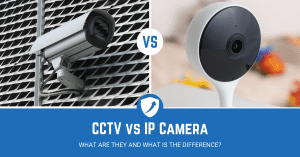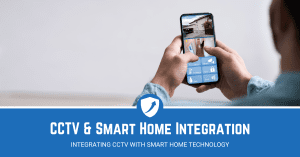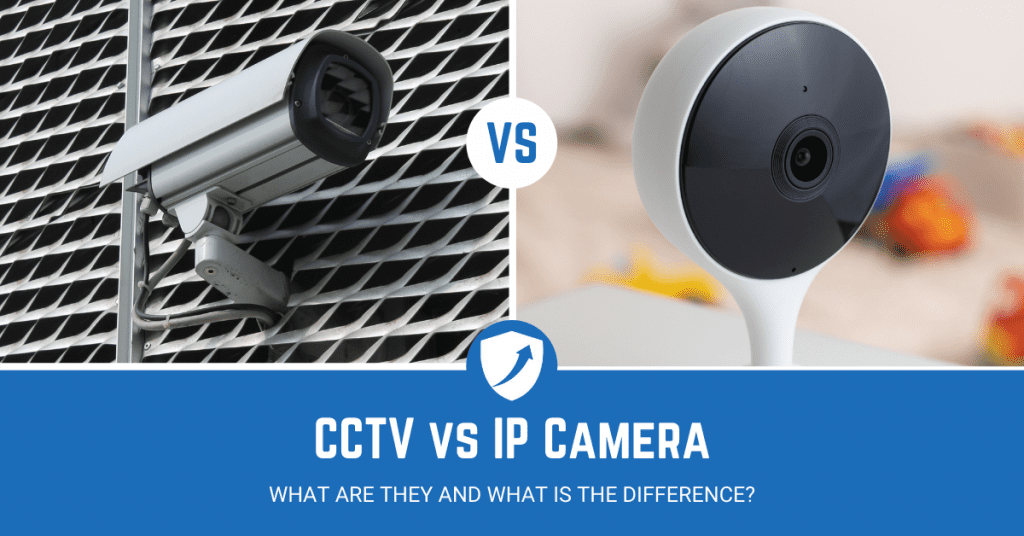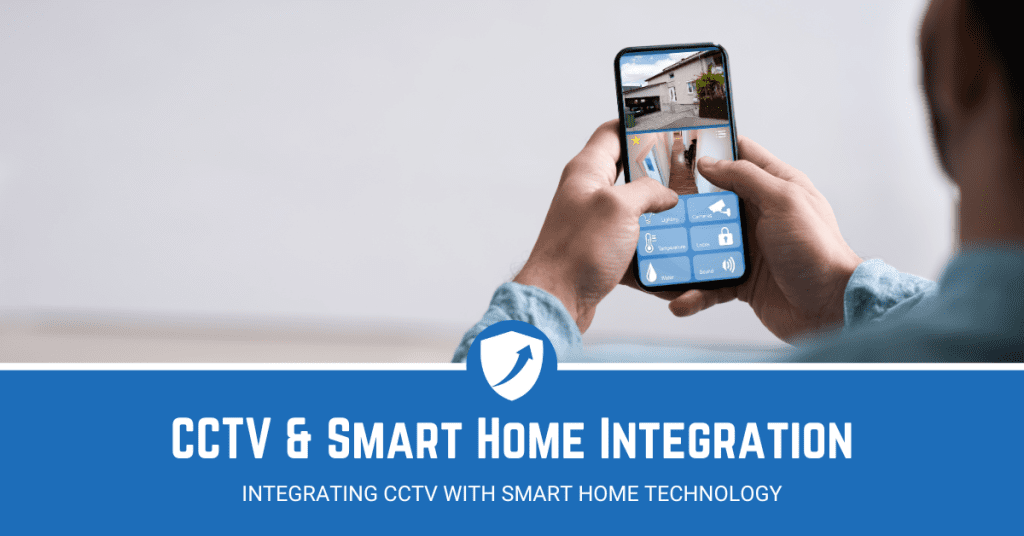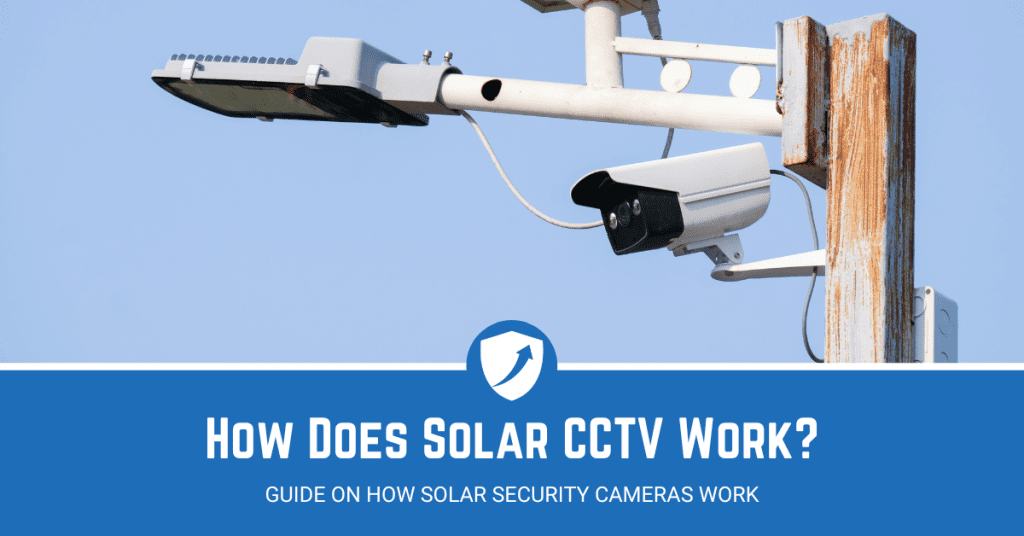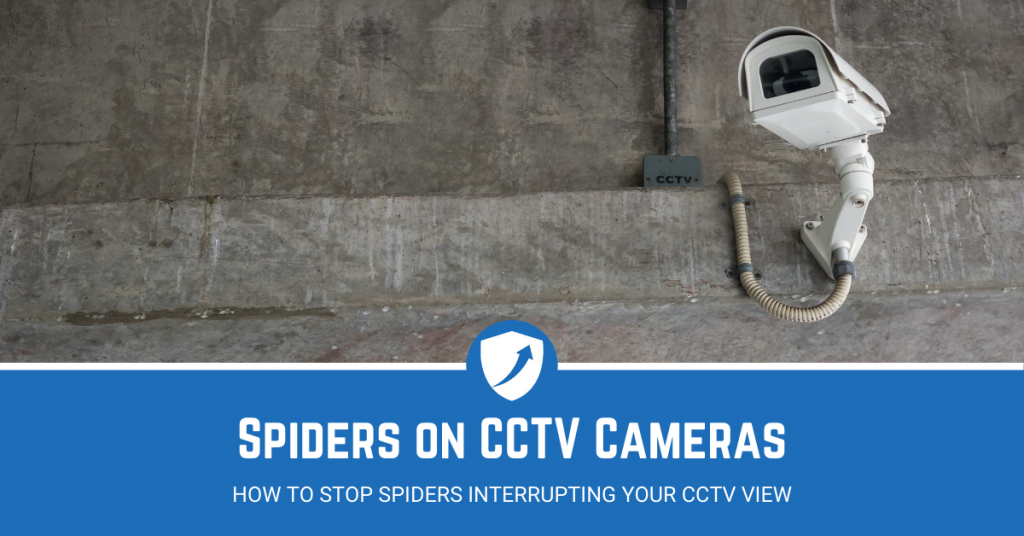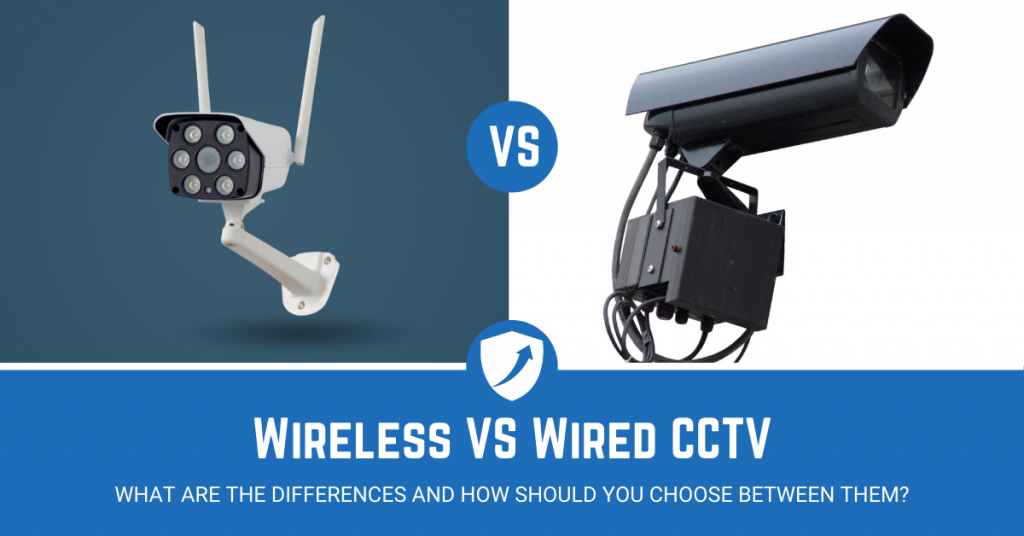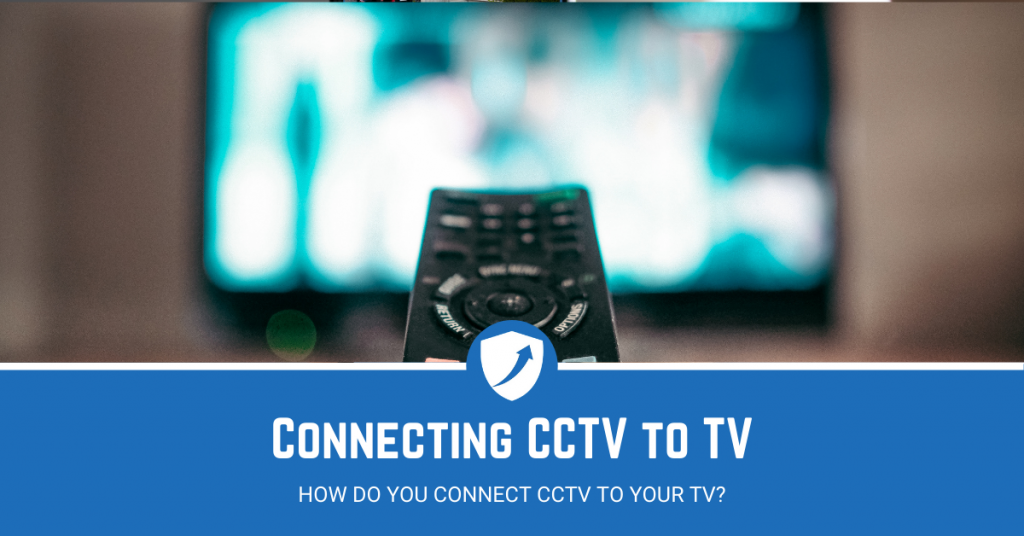In today’s rapidly evolving world, ensuring the security and safety of our homes, businesses, and public spaces has become an utmost priority.
With the advancements in technology, CCTV remote monitoring has emerged as an effective solution to enhance security, safety, and surveillance.
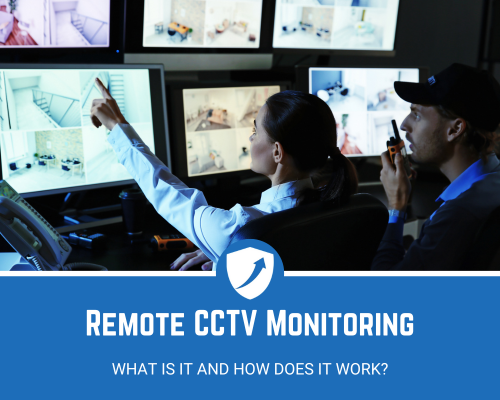
CCTV remote monitoring, also known as closed-circuit television remote monitoring, is a sophisticated system that allows real-time monitoring and surveillance of premises from a remote location.
It provides a comprehensive and proactive approach to security, enabling continuous monitoring and quick response to any suspicious activities or emergencies.
In this blog post, we will explore the fundamentals:
- The definition and importance of CCTV remote monitoring
- Delve into its working mechanisms
- The various components required for setting up a CCTV remote monitoring system
- Key considerations & best practices
- Different benefits and applications of CCTV remote monitoring
As with any security system, there are legal and ethical considerations that need to be addressed when implementing CCTV remote monitoring. We will discuss privacy laws, consent requirements, and data protection measures to ensure compliance and protect individuals’ rights.
Moreover, we will delve into cybersecurity measures and integration with other security systems, such as alarm systems and access control, to create a comprehensive security ecosystem. We will also explore the role of video analytics and intelligent monitoring in enhancing the effectiveness of CCTV remote monitoring.
Lastly, we will discuss the importance of monitoring and response protocols, including the establishment of 24/7 monitoring centres and the implementation of incident response and emergency procedures.
What's in this Guide?
Introduction to CCTV Remote Monitoring
Definition of CCTV Remote Monitoring
CCTV remote monitoring, also known as closed-circuit television remote monitoring, refers to the use of surveillance cameras and advanced technology to monitor and manage security systems from a remote location. It allows for real-time monitoring, recording, and analysis of video footage captured by cameras placed in strategic locations.
Unlike traditional CCTV systems, which require physical monitoring on-site, remote monitoring enables security personnel or operators to monitor multiple locations simultaneously from a centralised control room or through web-based applications. This remote access provides flexibility, convenience, and improved efficiency in managing security operations.
Importance and Benefits of CCTV Remote Monitoring
The importance of CCTV remote monitoring cannot be overstated in today’s security landscape. It serves as a proactive measure to deter criminal activities, prevent security breaches, and provide quick response to emergencies. Here are some key benefits of implementing a CCTV remote monitoring system:
- Enhanced Security: CCTV remote monitoring acts as a powerful deterrent against criminal activities such as theft, vandalism, and trespassing. The presence of surveillance cameras, coupled with the knowledge that the premises are being monitored remotely, significantly reduces the likelihood of security incidents.
- Real-time Monitoring: With CCTV remote monitoring, security personnel can monitor multiple locations in real-time from a centralized control room. This allows for immediate detection of suspicious activities, enabling prompt response and intervention to mitigate potential threats.
- Cost-effective: Implementing a CCTV remote monitoring system can be a cost-effective solution compared to hiring and deploying physical security guards at each location. Remote monitoring allows for efficient allocation of resources, reducing the need for on-site personnel and associated costs.
- 24/7 Surveillance: CCTV remote monitoring systems are designed to operate round the clock, providing continuous surveillance even during non-business hours. This ensures that any security incidents or emergencies can be promptly detected and addressed, regardless of the time of day.
- Evidence Collection: In the event of a security breach, CCTV remote monitoring systems capture high-quality video footage that can serve as valuable evidence for investigations and legal proceedings. This evidence can help identify perpetrators, reconstruct events, and support law enforcement efforts.
- Remote Access and Control: One of the key advantages of CCTV remote monitoring is the ability to access and control the system from anywhere, at any time. This remote access allows security personnel or authorised individuals to view live video feeds, review recorded footage, and manage system settings remotely, providing convenience and flexibility.
Overall, CCTV remote monitoring plays a crucial role in maintaining a secure environment by leveraging advanced technology to monitor and manage security systems effectively. The next section will delve into the various components of a CCTV remote monitoring system, providing a deeper understanding of its infrastructure and functionality.
Components of a CCTV Remote Monitoring System
A CCTV remote monitoring system consists of various components that work together to ensure effective surveillance and management of security operations. Understanding these components is essential for designing and implementing a robust and reliable CCTV remote monitoring system. Let’s explore each component in detail:
CCTV Cameras and their Types
The cameras are the primary component of any CCTV remote monitoring system. They capture video footage of the monitored areas and transmit it to the central control room or remote viewing stations. There are different types of cameras available, including:
- Dome Cameras: These cameras are discreet and can be easily mounted on ceilings or walls. They offer a wide-angle view, making them suitable for monitoring large areas such as hallways, lobbies, or open spaces.
- Bullet Cameras: Bullet cameras are long and cylindrical in shape, designed for outdoor surveillance. They are weatherproof and offer a focused view, making them ideal for monitoring specific areas such as parking lots or entrances.
- PTZ Cameras: PTZ (Pan-Tilt-Zoom) cameras provide the ability to pan, tilt, and zoom remotely. This flexibility allows operators to adjust the camera’s field of view and focus on specific areas of interest. PTZ cameras are commonly used in areas requiring active monitoring, such as airports or large public spaces.
- IP Cameras: Internet Protocol (IP) cameras are becoming increasingly popular in CCTV remote monitoring systems. These cameras use digital technology to transmit video data over an IP network, enabling remote access and control. IP cameras offer high-resolution video, advanced features, and scalability.
Digital Video Recorders (DVRs) and Network Video Recorders (NVRs)
DVRs and NVRs are responsible for recording and storing the video footage captured by the cameras. DVRs are used in traditional analog CCTV systems, while NVRs are used in IP-based systems. Both devices offer various storage capacities, allowing for the retention of video footage for extended periods.
DVRs and NVRs also provide advanced functionalities such as motion detection, scheduled recording, and event-triggered recording. Additionally, they enable the remote viewing and playback of recorded footage, providing convenience and flexibility to security personnel.
Monitors and Video Walls
Monitors are essential for viewing live video feeds and recorded footage in the control room or remote viewing stations. They come in various sizes and resolutions, depending on the requirements of the CCTV remote monitoring system.
In large-scale operations, video walls are deployed to display multiple video feeds simultaneously. Video walls consist of multiple monitors arranged in a grid-like configuration, providing a comprehensive view of all monitored areas.
This setup allows operators to monitor multiple locations and camera feeds simultaneously, enhancing situational awareness and response capabilities.
Internet Protocol (IP) Cameras and their Advantages
As mentioned earlier, IP cameras use digital technology to transmit video data over an IP network. Compared to analog cameras, IP cameras offer several advantages in a CCTV remote monitoring system:
- Higher Resolution: IP cameras typically offer higher resolution and image quality compared to analog cameras. They capture more details, enabling better identification of individuals and objects in the video footage.
- Flexible Installation: IP cameras can be easily installed and integrated into existing network infrastructure. They use standard network protocols, allowing for seamless integration with other devices and applications.
- Remote Access and Control: IP cameras facilitate remote access and control through web-based applications or dedicated software. This means that authorized users can view live video feeds, review recorded footage, and manage camera settings from anywhere, using a computer or mobile device with internet connectivity.
- Scalability and Flexibility: IP-based CCTV remote monitoring systems can be easily expanded and scaled up as per the evolving security needs. Additional IP cameras can be added to the network without requiring significant changes to the infrastructure.
Network Infrastructure and Connectivity Requirements
A robust network infrastructure is crucial for the smooth operation of a CCTV remote monitoring system. It should be capable of handling the bandwidth requirements of video streams, ensuring reliable and uninterrupted transmission of video data.
The network infrastructure includes routers, switches, and cables that connect the cameras, DVRs/NVRs, and monitoring stations. It should be designed to accommodate the number of cameras, resolution requirements, and the distance between devices. Proper network segmentation and security measures should be implemented to prevent unauthorised access to the system.
Software and Applications for Remote CCTV Monitoring
Software and applications play a vital role in the effective management of a CCTV remote monitoring system. They provide functionalities such as live viewing, video playback, camera configuration, and event notifications. Advanced software solutions may also include video analytics capabilities, enabling automated video processing and intelligent monitoring.
These software applications can be installed on dedicated servers or cloud-based platforms, allowing authorised users to access and manage the system remotely. They provide a user-friendly interface and customisable features to meet the specific requirements of the organisation.
Understanding the components of a CCTV remote monitoring system is essential for designing a system that meets the security objectives and requirements of a particular location. In the next section, we will dive deeper into the process of setting up a CCTV remote monitoring system, covering the planning, design, installation, and configuration considerations.
How do you setup a Remote CCTV Monitoring System?
Setting up a CCTV remote monitoring system requires careful planning, design considerations, and proper installation and configuration.
By following a systematic approach, you can ensure that your system meets the security objectives and effectively monitors the desired areas.
Let’s explore the key steps involved in setting up a CCTV remote monitoring system:
Planning and Design Considerations
Before beginning the installation process, it’s crucial to conduct a comprehensive assessment of your security needs and objectives. Consider the following factors during the planning stage:
- Assessing Security Needs: Identify the specific areas that require surveillance and determine the level of security required. Consider factors such as the size of the area, the significance of the assets or activities being monitored, and the potential security threats.
- Determining Camera Placement and Coverage Areas: Carefully plan the placement of cameras to ensure optimal coverage of the desired areas. Consider factors such as line of sight, potential blind spots, and strategic positioning to capture relevant activities and potential security breaches.
- Selecting Appropriate Camera Types and Specifications: Based on your security needs and coverage requirements, choose the most suitable camera types, such as dome, bullet, or PTZ cameras. Consider factors such as resolution, field of view, low-light capabilities, and weather resistance.
- Designing Network Infrastructure for Remote Monitoring: Take into account the network infrastructure required to support the CCTV remote monitoring system. Consider factors such as the number of cameras, bandwidth requirements, and the distance between devices. Ensure that the network infrastructure is capable of handling the data transmission load and provides reliable connectivity.
Installation and Configuration Process
Once the planning and design phase is complete, it’s time to proceed with the installation and configuration of the CCTV remote monitoring system.
Follow these steps for a successful installation:
- Mounting Cameras and Positioning Them Correctly: Install the cameras in the designated locations according to the planned camera placement. Ensure that the cameras are securely mounted and positioned to capture the desired areas effectively. Adjust the camera angles and focus as necessary.
- Connecting Cameras to the DVR/NVR: Connect each camera to the respective DVR or NVR using appropriate cables. Ensure that the connections are secure and properly labeled for easy identification. Follow the manufacturer’s instructions for the specific camera and recording device models.
- Configuring Network Settings and Remote Access: Set up the network configuration for remote monitoring. Configure the IP addresses, network ports, and other necessary settings for the cameras, DVRs/NVRs, and monitoring stations. Enable remote access and ensure that the necessary security measures, such as encryption and access control, are implemented.
- Testing and Troubleshooting the System: Perform a thorough testing of the CCTV remote monitoring system to ensure that all components are functioning correctly. Check the camera feeds, recording capabilities, and remote access functionality. Troubleshoot any issues that arise during the testing process, such as connectivity problems or camera misalignment.
By following a systematic approach during the installation and configuration process, you can ensure that your CCTV remote monitoring system is set up correctly and ready for operation. In the next section, we will explore the benefits and applications of CCTV remote monitoring, highlighting its significance in various settings and industries.
What are the Benefits of CCTV Remote Monitoring?
CCTV remote monitoring offers a wide range of benefits and has extensive applications across various sectors. Its effectiveness in enhancing security, safety, and surveillance makes it a valuable tool in numerous settings. Let’s explore the key benefits and applications of CCTV remote monitoring:
Increased Security and Crime Prevention
One of the primary benefits of CCTV remote monitoring is its ability to enhance security and prevent crime. The presence of surveillance cameras acts as a deterrent, discouraging potential criminals from engaging in illegal activities.
The knowledge that their actions are being monitored and recorded increases the risk of detection and apprehension.
CCTV remote monitoring systems enable real-time monitoring of multiple areas from a centralised control room, allowing security personnel to detect and respond to suspicious activities promptly.
This proactive approach can prevent security breaches and help mitigate potential threats before they escalate.
Enhanced Safety and Protection in Public Areas
CCTV remote monitoring plays a pivotal role in ensuring public safety and protection in various settings.
In public areas such as parks, streets, and transportation hubs, surveillance cameras help monitor crowd behaviour, identify potential hazards, and detect any signs of aggression or violence. This enables security personnel to take immediate action, ensuring the safety of individuals in these public spaces.
Additionally, CCTV remote monitoring systems can be integrated with public safety measures such as emergency alarms and public address systems.
In the event of emergencies or incidents, operators can quickly assess the situation, coordinate response efforts, and provide timely information to the public, aiding in effective emergency management.
CCTV Remote Monitoring Applications
Surveillance in Commercial and Industrial Settings
CCTV remote monitoring is widely used in commercial and industrial settings to safeguard assets, prevent theft, and ensure operational efficiency. In retail stores, for example, surveillance cameras help reduce shoplifting and employee theft by acting as a deterrent and providing evidence in case of incidents.
In warehouses and manufacturing facilities, CCTV remote monitoring systems assist in monitoring operations, ensuring compliance with safety protocols, and detecting unauthorized access to restricted areas. The ability to remotely monitor critical areas and processes enables proactive decision-making and enhances overall operational security.
Monitoring of Critical Infrastructure and Utilities
Critical infrastructure, such as power plants, water treatment facilities, and transportation networks, requires robust security measures to prevent disruptions and protect against potential threats.
CCTV remote monitoring systems provide continuous surveillance of these critical assets, enabling operators to monitor for any unauthorized access, potential sabotage, or safety hazards.
By integrating CCTV remote monitoring with other security systems, such as access control and intrusion detection, operators can form a comprehensive security ecosystem.
This integration enhances situational awareness, facilitates quick response to incidents, and helps safeguard critical infrastructure and utilities from potential risks.
Traffic Management and Surveillance on Roads and Highways
CCTV remote monitoring plays a crucial role in traffic management and surveillance on roads and highways.
By strategically placing cameras along roadways, operators can monitor traffic flow, detect accidents or congestion, and quickly respond to incidents. This allows for efficient traffic management, reducing delays and improving overall road safety.
Moreover, CCTV remote monitoring systems can be integrated with intelligent transportation systems, such as automated license plate recognition (ALPR) and traffic analytics.
These technologies enhance the capabilities of traffic monitoring, enabling operators to gather valuable data, detect traffic violations, and implement effective traffic management strategies.
Remote Monitoring for Residential Properties and Homes
CCTV remote monitoring systems are increasingly being adopted for residential properties and homes to enhance security and provide peace of mind. Homeowners can remotely monitor their properties, receive real-time alerts for any suspicious activities, and even view live CCTV feeds from their smartphones or other internet-connected devices.
These systems offer features such as motion detection, object recognition, and two-way audio communication, allowing homeowners to interact with visitors or potential intruders remotely.
The ability to remotely monitor and control the CCTV system provides homeowners with a sense of security and enables them to take immediate action if any security concerns arise.
In conclusion, CCTV remote monitoring offers a multitude of benefits and applications across various sectors.
From increasing security and preventing crime to enhancing safety in public areas and monitoring critical infrastructure, CCTV remote monitoring systems provide a valuable tool for effective security management.
The flexibility, convenience, and proactive nature of remote monitoring make it an indispensable component of modern security systems.
In the next section, we will discuss the best practices and considerations for CCTV remote monitoring, ensuring compliance with legal and ethical requirements, and implementing robust cybersecurity measures.
Best Practices and Considerations for CCTV Remote Monitoring
While CCTV remote monitoring offers numerous benefits, it is crucial to adhere to best practices and consider various factors to ensure the system’s effectiveness, compliance with legal requirements, and protection against cyber threats. Let’s explore some key considerations for implementing and managing CCTV remote monitoring systems:
Legal and Ethical Considerations
When deploying CCTV remote monitoring systems, it is essential to comply with applicable laws, regulations, and ethical guidelines.
Consider the following:
- Privacy Laws and Regulations: Familiarise yourself with privacy laws and regulations in your jurisdiction. Understand the limitations on capturing and storing personal information through surveillance cameras. Obtain the necessary permits and inform individuals about the presence of CCTV cameras as required.
- Consent and Disclosure Requirements: In some cases, obtaining consent from individuals before capturing their images or recording their activities may be necessary. Ensure that clear signage is displayed to inform people that they are under surveillance. This transparency helps maintain trust and ensures compliance with legal requirements.
Cybersecurity and Data Protection Measures
As with any system connected to a network, CCTV remote monitoring systems are vulnerable to cyber threats.
Implement robust cybersecurity and data protection measures to safeguard your system:
- Securing the Network Infrastructure: Ensure that the network infrastructure supporting the CCTV remote monitoring system is secure. Use firewalls, VPNs, and intrusion detection systems to protect against unauthorized access. Regularly update firmware and software to address security vulnerabilities.
- Encryption and Access Control: Encrypt video data during transmission and storage to prevent unauthorized access and tampering. Implement strong access control measures, including complex passwords, multi-factor authentication, and user privilege management.
- Regular System Updates and Maintenance: Stay updated with the latest firmware and software releases from manufacturers. Regularly patch and update all components of the CCTV remote monitoring system to address security vulnerabilities. Conduct routine maintenance and system checks to ensure optimal performance.
Integration with Other Security Systems
CCTV remote monitoring systems can be integrated with other security systems to enhance overall effectiveness and response capabilities:
- Alarm Systems and Access Control: Integrate the CCTV remote monitoring system with alarm systems and access control systems. This integration enables operators to quickly verify alarms, assess the situation through live video feeds, and take appropriate action.
- Video Analytics and Intelligent Monitoring: Implement video analytics technologies, such as facial recognition, object detection, or anomaly detection. These advanced features can automatically analyze video footage, detect abnormal activities, and trigger alerts, reducing the reliance on manual monitoring and enhancing the system’s efficiency.
Monitoring and Response Protocols
Establishing effective monitoring and response protocols is crucial for the successful operation of a CCTV remote monitoring system:
- 24/7 Monitoring Centers and Operators: Ensure that a dedicated monitoring center operates 24/7 to monitor the CCTV remote monitoring system. Trained operators should be responsible for real-time monitoring, incident response, and coordination with relevant authorities or security personnel.
- Incident Response and Emergency Procedures: Develop clear incident response and emergency procedures to guide operators in handling security incidents or emergencies. Define escalation procedures, communication channels, and roles and responsibilities to ensure a coordinated response and minimize potential risks.
By following these best practices and considerations, you can maximize the effectiveness and security of your CCTV remote monitoring system. It is essential to continually review and update your practices to adapt to changing security needs and evolving technologies.
In conclusion, CCTV remote monitoring systems offer significant advantages in enhancing security, safety, and surveillance.
By implementing and managing these systems with a focus on legal compliance, cybersecurity, integration with other security systems, and effective monitoring and response protocols, you can create a robust and reliable security ecosystem.
Conclusion
CCTV remote monitoring is a valuable tool in today’s security landscape, offering flexibility, convenience, and proactive security measures.
By following the best practices and considering the various factors outlined in this blog post, organisations and individuals can effectively leverage CCTV remote monitoring to ensure the security and safety of their premises.
As technology continues to advance, CCTV remote monitoring systems will evolve, incorporating more intelligent features such as video analytics, artificial intelligence, and cloud-based solutions.
It is crucial for security professionals and organisations to stay updated with the latest developments and adapt their systems accordingly, ensuring they remain effective in addressing emerging security challenges.
In conclusion, CCTV remote monitoring is a powerful solution that provides real-time surveillance, enhances security, and enables quick response to potential threats.
Whether it is for residential properties, commercial spaces, public areas, or critical infrastructure, CCTV remote monitoring systems offer a comprehensive approach to security and peace of mind.
.


